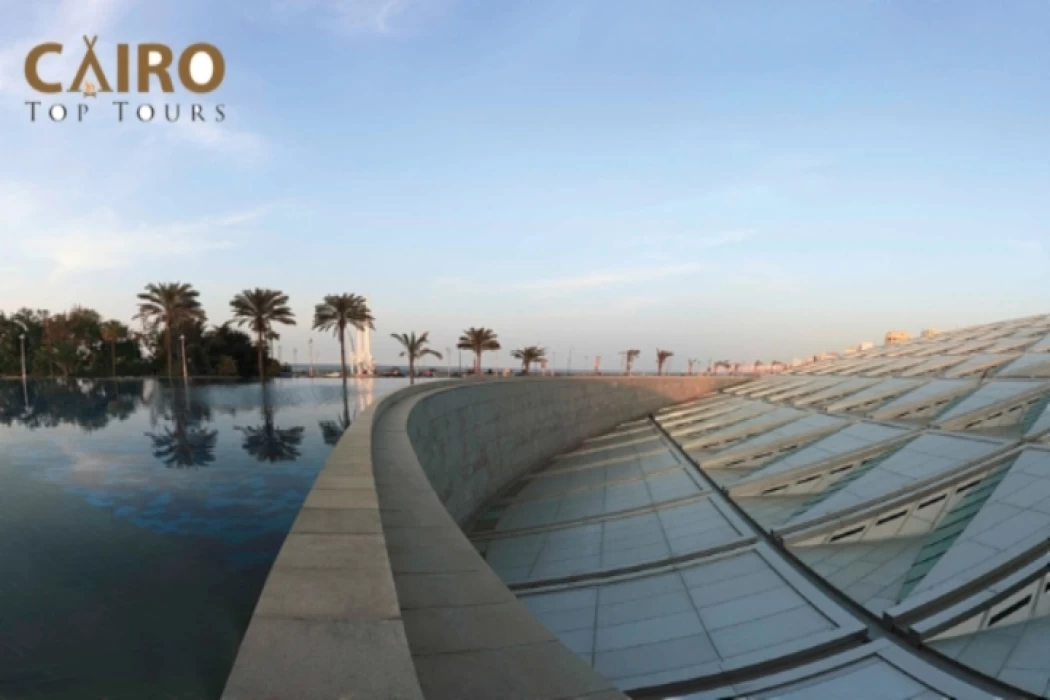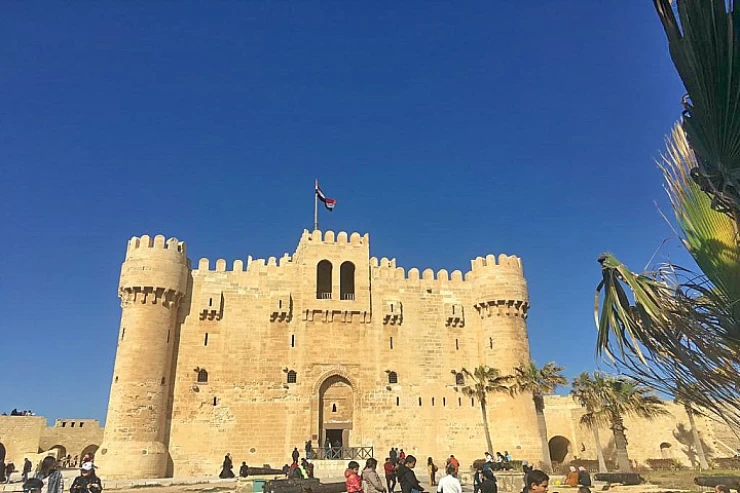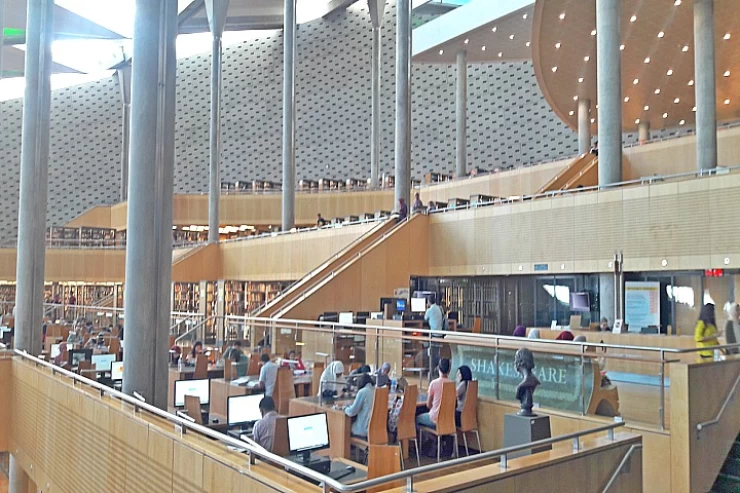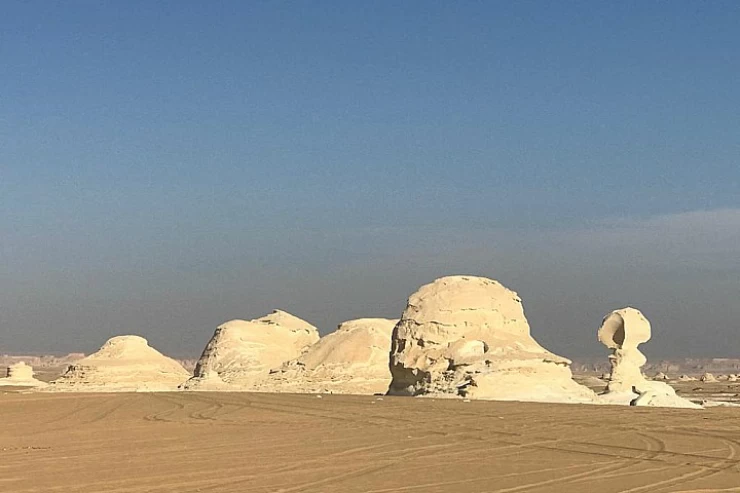
bibliotheca Alexandrina
The Bibliotheca Alexandrina, often referred to simply as the Library of Alexandria, is a monumental cultural institution located in Alexandria, Egypt. Here are some key points and information about this prestigious library:
1. **History and Revival**: The Bibliotheca Alexandrina was inaugurated on October 16, 2002, with the aim of reviving the ancient Library of Alexandria, which was one of the most famous libraries of the ancient world. The ancient library was established in the 3rd century BCE and was renowned for its vast collection of scrolls and its role as a center of scholarship and learning.
2. **Architecture**: The modern Bibliotheca Alexandrina is a striking piece of architecture designed by the Norwegian architectural firm Snøhetta. Its design incorporates elements reminiscent of the ancient library, such as a tilted roof and granite walls engraved with characters from various scripts.
3. **Collections**: The library houses a vast collection of books, manuscripts, and other materials in multiple languages, covering various subjects including humanities, sciences, arts, and literature. The collection includes rare manuscripts and ancient texts, as well as contemporary publications.
4. **Facilities**: In addition to its main library collections, the Bibliotheca Alexandrina features several specialized libraries, museums, art galleries, and a planetarium. It serves as a cultural hub, hosting exhibitions, conferences, workshops, and cultural events throughout the year.
5. **Research and Education**: The library promotes research and scholarship through its various programs and initiatives. It offers research grants, fellowships, and academic exchanges, and collaborates with international institutions to advance knowledge and cultural understanding.
6. **Digital Library**: The Bibliotheca Alexandrina has a significant digital presence, offering access to its collections through its digital library platform. This platform provides online access to a wide range of resources, making it accessible to researchers, scholars, and the public worldwide.
7. **Cultural Impact**: The Bibliotheca Alexandrina is not only a center for academic research but also plays a crucial role in promoting cultural dialogue and exchange. It hosts events that celebrate cultural diversity, artistic expression, and intellectual discourse, aiming to foster understanding and cooperation among people of different backgrounds.
Overall, the Bibliotheca Alexandrina stands as a symbol of Alexandria's rich intellectual heritage and continues to play a vital role in promoting knowledge, learning, and cultural exchange on a global scale.
The Library of Alexandria was the world's largest library it was established by King Ptolemy I and it housed about 900,000 manuscripts throughout his reign.
The original library had all the article's secrets regarding the traditional civilization of Egypt.
Library of Alexandria
Its destruction has been attributed to totally different actors, however, no version has been tried, the sole clear issue is that it finally disappeared, and it was not till 1987 that a world project wanted to rescue the cultural significance of the location and therefore the image it represents, began the legendary collective imagined library of humanity. UNESCO coordinated the project and eventually, the name the Alexandria Library, it was formally opened in 1996.
As well to its massive archive, which can withstand carrying about twenty million copies, and a space for over 2,000 simultaneous scholars, it also has a planetarium, and a Science Museum, one for calligraphy and the other one for archaeology, in addition to a laboratory of restoration, a modern printing press and a library specialized for children and people with special abilities.
Discover the Bibliotheca of Alexandria and many other monuments in the city that was built by the legendary Macedonian ruler Alexander the Great in 332 B.C. by booking the traditional day tour to Alexandria from Cairo to enjoy the best atmosphere in the whole country of Egypt.
Sitting on the shores of the Mediterranean Sea in Alexandria, the Bibliotheca Alexandrina is a stunning monument to one of the most famous primal libraries. The New Library of Alexandria is designed in modern architectural design, houses an incomprehensible variety of materials, and utilizes the latest available technological advancements; thus, the New Library of Alexandria has become a beacon of information and heritage for researchers and tourists alike. In this article, we investigate the exceptional history and remarkable achievements of Bibliotheca Alexandrina, including its establishment, architectural design, collections, and contribution to education and intercultural communication today.
The Library of Alexandria, which first came into existence around the 3rd century before the Common Era, was an ancient library in the world that was massive and of great geographical significance. It captured the brainpower of Alexandria in that scholars and learned men and women from every part of the globe trooped in to learn, converse, and even teach. Even though the old library was unfortunately burned down to ashes, its memory has been able to motivate the entire world positively.
In the late 20th century, Egypt was involved in far-reaching activities to undertake this effort, with the help of UNESCO and several countries around the world. The purpose was to create a modern library that would also incorporate an area for educational and communal interactions rather than a boring storage place for books. This she envisaged for completion in the year 2002 with the formal launch of the Bibliotheca Alexandrina, a newly built facility located in proximity to the ancient library of Alexandria.
The edifice, whose creation was by the Norwegian architecture firm Snøhetta, has quite interesting traditional and modern architecture. The building structure of Bibliotheca Alexandrina, takes the form of a huge blunt disk at an angle, symbolizing the sun of knowledge, which brings light to Alexandria and other places. The design is well thought out to retain the historical, cultural, traditional, and ethnic values of Egypt in building a modern center.
One of the most notable elements of the library is the granite wall that surrounds the building and has engravings in 120 languages illustrating the people's linguistic richness. This very well represents the ideals of the library, which is to become a place for everyone everywhere, a true learning and inclusive center. Another characteristic feature of the construction is its sloping roof, which enables the penetration of sunlight in the interior, providing a calm and pleasant ambiance conducive to reading, working, or admiring the structure.


















